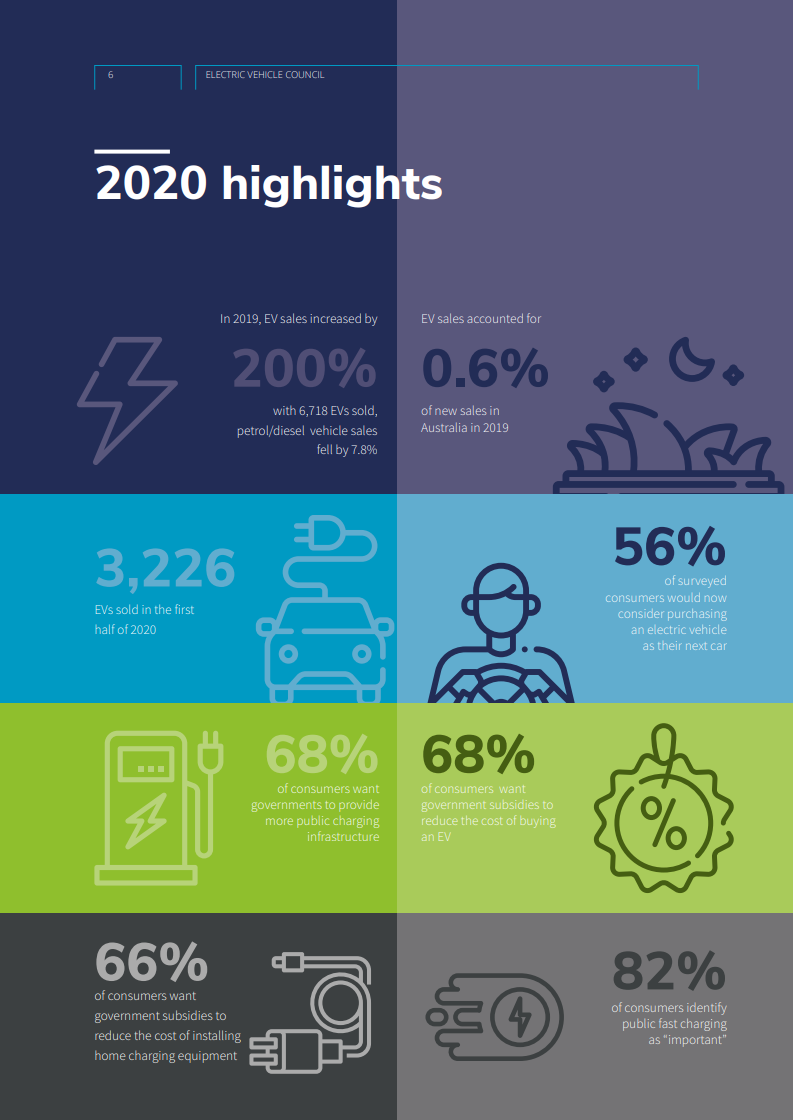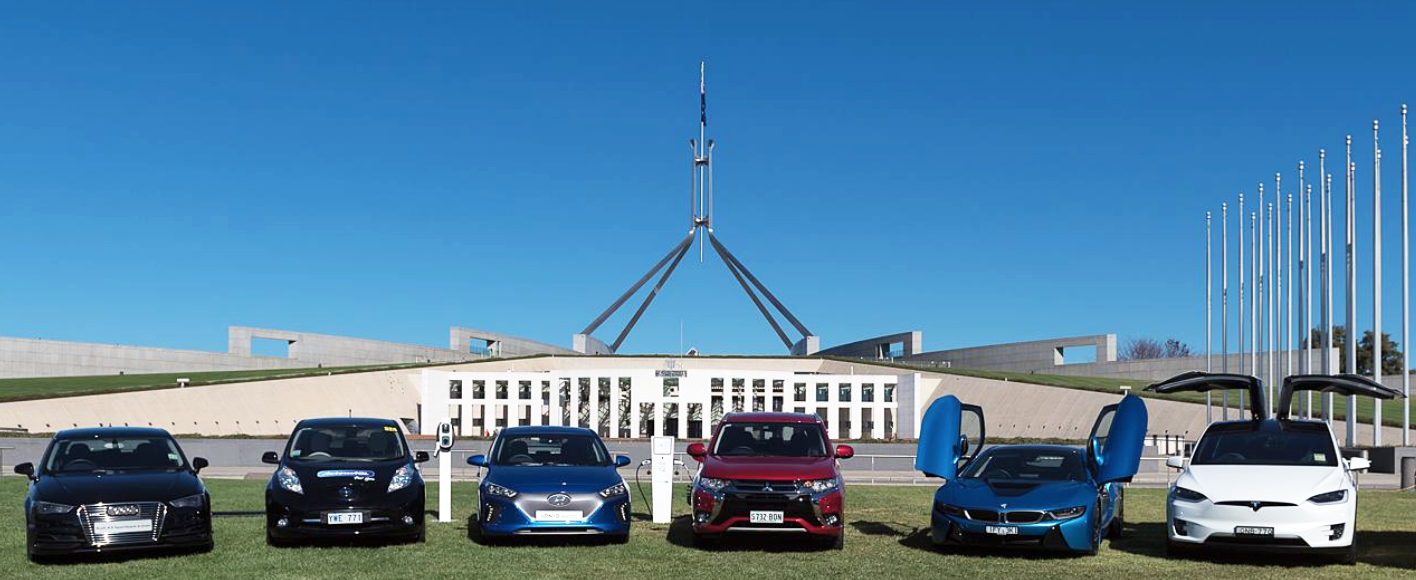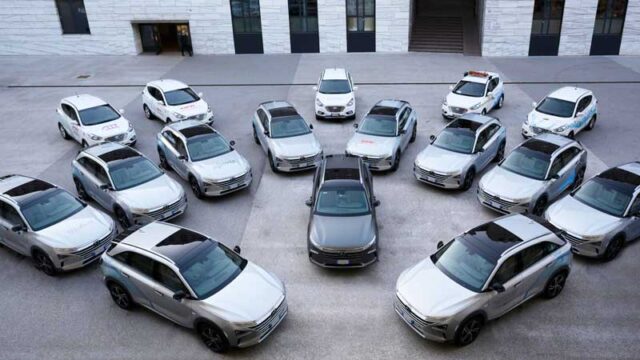Australian sales of electric cars are on the rise, and this brings many financial savings and sustainability advantages.
The shift is likely to change the face of infrastructure and public works programs, with the promise of bringing forward enormous environmental and cost advantages. Finally, organisations with fleet cars and sustainability-reduction targets have the ability to bring about meaningful change.
Studies have found that electric vehicles (EVs) also have a lower centre of gravity, making them less likely to roll over in a collision, and reduced risk of fire or explosion than conventional vehicles. And with a growing number of corporations defining targets that align with their corporate social responsibility, a shift to EV fleets is here.
AGL Energy has announced a transition of its 400-plus company fleet vehicles to EVs by 2030, becoming the first Australian company to sign up to the global EV100 initiative, which encourages businesses to shift to electric vehicles.
Size of the EV market
EV sales in Australia are booming, growing by 200 per cent in 2019 alone, with 6,718 electric vehicles sold and 7.8 per cent less petrol or diesel vehicles sold, according to a new report produced by the industry’s national body, the Electric Vehicle Council.
Sales in the first half of this year have been strong, with a further 3,226 EVs sold in the first half of 2020. It’s a particularly robust result given Australians purchased fewer cars during COVID-19, with a 20 per cent overall reduction in car sales in 2020.
Intention to purchase is also strong, and continuing to grow, with 56 per cent of consumers considering purchasing an EV as their next car. Put simply, we’re less inclined to opt for a petrol car these days, with consumer awareness and attitudes continuing to be driven towards EVs.
And there are plenty of makes and models for drivers to choose from, with 28 EV models for sale in Australia right now. Meanwhile, many mainstream car marques have established their own targets to bolster sales of EVs within their range, with more models arriving by 2021.

Government support for EVs
The Federal Government has introduced measures to support the growth of the EV market, with 2,307 public charging stations across the country; 357 of these are fast public charging stations (an increase of more than 40 per cent in the past 12 months).
Another clear sign EVs are here to stay is that all tiers of government in Australia have emission-reduction plans in place. One Federal Government report even goes as far as to declare EVs “at the forefront of a major transformation of the world’s transport sector”.
Buying an EV could get even cheaper, with Australian business grants announced as part of the government’s new clean energy package. However, the industry’s national body says they don’t go far enough, pointing to a survey that reveals 68 per cent of consumers want government subsidies to reduce the purchase price of an electric vehicle and the associated home-charging equipment.
The Electric Vehicle Council continues to push for greater government support to grow the broader industry in Australia. There’s still a long way to go, however, with EVs accounting for just 0.6 per cent of all new sales last year.
Big changes for fleet industry
Robert Wilson is the Director of IPWEA Fleet for Australasia, based in Victoria. He says there are obvious infrastructure considerations being contemplated by the industry. These are charging facilities in commercial car parks, residential developments and en route.
“But there are also less obvious considerations, such as charging facilities for city locations where on-street parking is the norm, power supply integration for large depots and so on,” he says. “Background policy will also change. Fuel excises will be less relevant, with an increased EV fleet, and announcements have already been made about the introduction of road-user charges.”
The introduction of EVs improves sustainability measures significantly, especially with the increasing move to renewable energy. “Future cost advantages are also very positive – low fuel cost and low maintenance costs in particular,” says Wilson.
“The big win financially will occur with reduced capital cost. The EV industry is expecting total ownership costs of EVs to be the same as conventional vehicles by 2021, and upfront costs to be cheaper by 2025. Even if these dates are optimistic, it won’t be far away.”

Debunking EV myths
One common misconception is that EVs are expensive to run, but that’s not the case. In fact, EVs can save the average driver more than $1,500 a year on fuel costs, while maintenance and servicing savings were estimated at between $300 and $3,000 per year in 2018.
Meanwhile, manufacturers are investing big bucks in EV technology. A Victorian Government report reveals the automotive sector intends to invest $150 billion in EVs by this year.
And growth in EV sales coincides with the world getting a taste of what life would be like with less pollution during the COVID-19 crisis.
Daily global carbon dioxide emissions decreased by 17 per cent by early April, compared with the mean 2019 levels. This is based on energy, activity and policy data available up until the end of April due to pandemic lockdowns and the subsequent reduction in economic activities.
In April, daily emissions decreased by around 18.7 million tonnes compared to average daily emissions in 2019. The last time emissions were at that level was in 2006, according to media reports.














